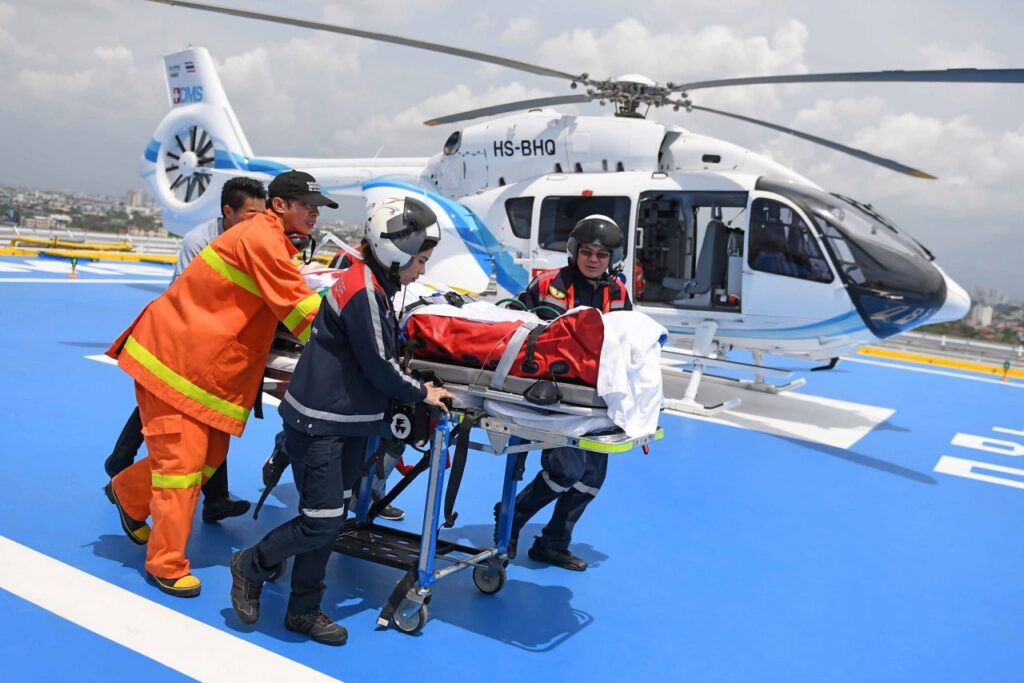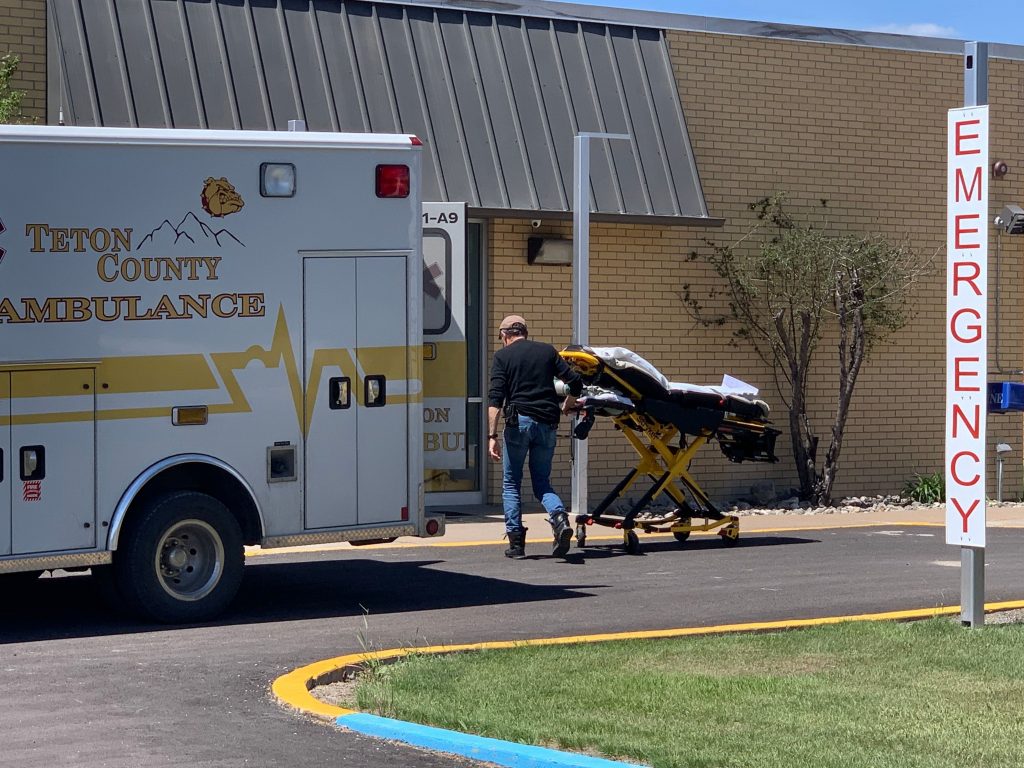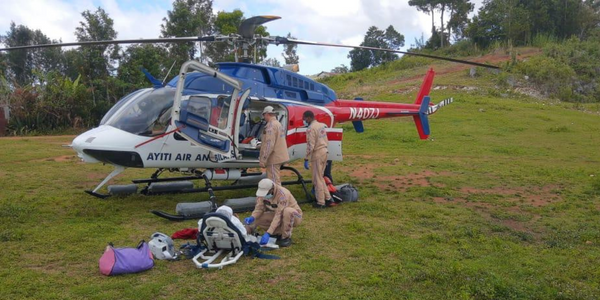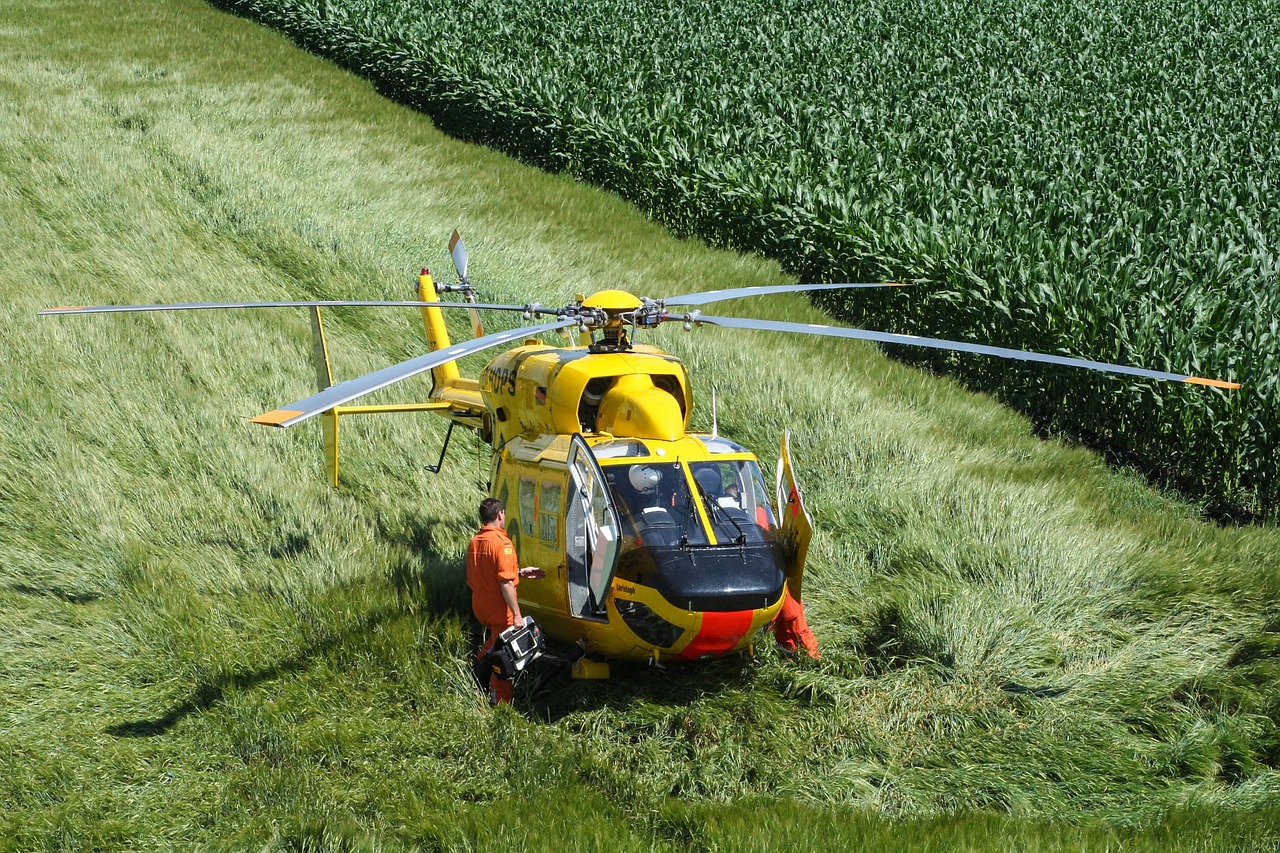Alright, imagine this scenario: you’re in a remote area, miles away from the nearest hospital, and suddenly someone is in need of urgent medical attention. What do you do? Typically, in such situations, time is of the essence and immediate medical assistance is crucial. This is where air ambulances come into play. In my blog, “Accessibility and Air Ambulances: Saving Lives in Remote Areas,” I’ll provide you with valuable information about how these life-saving services help bridge the gap in accessing medical care in remote locations. So, let’s buckle up and delve into the world of air ambulances!

1. Introduction
Welcome to this information blog on air ambulances! In this article, we will explore the world of air ambulances and how they play a crucial role in saving lives, particularly in remote areas. We will discuss the definition and purpose of air ambulances, the challenges faced in remote areas, the important role they play, the features they possess, coordination efforts involved, training and certification requirements, cost and affordability, and lastly, we will delve into some success stories. So let’s get started on this fascinating topic!
2. What are Air Ambulances?
2.1 Definition
Air ambulances, also known as medical helicopters or aeromedical services, are specially equipped aircraft designed to provide emergency medical assistance and transport to patients in critical condition. These aircraft are equipped with medical equipment and staffed by trained medical professionals, allowing for the effective delivery of medical care during transportation.
2.2 Purpose
The primary purpose of air ambulances is to transport patients, especially those in life-threatening situations, from remote or inaccessible areas to hospitals or medical facilities that can provide the necessary level of care. Air ambulances are designed to minimize transport time and provide immediate medical attention to patients in critical condition, ultimately increasing their chances of survival.
2.3 Types of Air Ambulances
There are several types of air ambulances, each specifically designed to cater to different patient needs and varying transport requirements. The most common types include helicopters, fixed-wing aircraft, and jets. Helicopters are highly maneuverable and are often used for short-distance transport and rescue operations in rugged terrains. Fixed-wing aircraft and jets, on the other hand, are faster and can cover longer distances, making them suitable for intercity or intercontinental medical transfers.

3. Challenges in Remote Areas
3.1 Lack of Infrastructure
Many remote areas lack proper road networks and transportation infrastructure, making it difficult for traditional ambulances to reach patients in a timely manner. This lack of infrastructure poses a significant challenge when it comes to providing immediate medical assistance to those in need. Air ambulances, with their ability to bypass roadblocks and geographical barriers, offer a vital solution in such contexts.
3.2 Limited Medical Facilities
Remote areas often have limited medical facilities, or in some cases, none at all. This means that critically ill or injured individuals may not have an adequate level of care available nearby. Air ambulances bridge this gap by swiftly transporting patients to medical facilities equipped with the necessary resources and expertise to treat their condition.
3.3 Inaccessibility due to Geography
Geographical features such as mountains, dense forests, or remote islands can create barriers to accessing patients in need. These areas may not be accessible by traditional ground transportation, requiring the use of air ambulances to reach those who require urgent medical attention.
3.4 Time Constraints
In emergencies, time is of the essence. Delays caused by distance, traffic congestion, or adverse weather conditions can significantly impact the chances of survival for critically ill or injured individuals. Air ambulances, with their ability to traverse vast distances swiftly, bypass traffic congestion, and reach remote areas, can minimize transport time, thus increasing the likelihood of positive patient outcomes.
4. The Role of Air Ambulances
4.1 Rapid Response
Air ambulances play a crucial role in providing rapid response to medical emergencies. In critical situations where every minute counts, air ambulances can be mobilized quickly, allowing medical professionals to reach the location promptly and provide immediate care to the patient. This rapid response is particularly vital in remote areas where traditional ground ambulances may face significant challenges in terms of accessibility and response time.
4.2 Transportation of Critical Patients
Transporting critically ill or injured patients from remote areas to medical facilities equipped with specialized care is a key role of air ambulances. These aircraft are equipped with advanced medical equipment and staffed by highly trained medical professionals who can stabilize patients during transport, ensuring their condition does not deteriorate further. The ability to provide proper medical care during transportation is a significant advantage of air ambulances, as it offers a higher level of care that may not be available during ground transportation.
4.3 Accessibility to Remote Areas
Air ambulances provide a lifeline to individuals in remote areas who would otherwise struggle to access timely and appropriate medical care. Whether it is a remote mountain village, an offshore island, or a rural area with limited healthcare infrastructure, air ambulances can quickly reach these locations and evacuate patients to medical facilities capable of providing the necessary care. This increased accessibility significantly improves the chances of survival and positive patient outcomes in remote areas.
5. Features of Air Ambulances
5.1 Medical Equipment and Staff
Air ambulances are equipped with a wide range of medical equipment, similar to those found in an intensive care unit. This equipment includes cardiac monitors, ventilators, defibrillators, and medication to stabilize patients during transport. Additionally, air ambulances have a dedicated medical team on board, consisting of paramedics, nurses, and sometimes even doctors, who are trained to provide advanced life support and emergency medical care during transportation.
5.2 Communication Systems
Effective communication is crucial in emergency situations. Air ambulances are equipped with advanced communication systems that enable seamless communication between the medical team on board, ground support, and the receiving medical facility. This allows for real-time updates on the patient’s condition and coordination of medical resources, ensuring a smooth and efficient transfer of care.
5.3 Navigational Aids
Navigating through remote areas or adverse weather conditions requires specialized navigation systems to ensure the safety and efficiency of air ambulance operations. Air ambulances are equipped with state-of-the-art navigational aids, such as GPS (Global Positioning System) and weather radar, which enable pilots to navigate accurately and avoid hazards. These systems enhance patient safety and enable pilots to make informed decisions during transport.
5.4 Safety Measures
Patient safety is of utmost importance in air ambulance operations. These aircraft adhere to stringent safety measures and regulatory standards. Air ambulances undergo regular maintenance and safety inspections to ensure optimal performance and minimize the risk of mechanical failures. The medical staff on board also undergo routine safety training to handle emergencies and ensure the safety of patients during transport.
6. Air Ambulance Coordination
6.1 Flight Dispatch and Coordination Centers
The successful operation of air ambulances relies on effective coordination between flight dispatch centers and medical personnel. Flight dispatch centers are responsible for receiving emergency calls, assessing the urgency of the situation, and mobilizing air ambulances accordingly. These centers communicate with medical teams on board, providing them with vital information about the patient’s condition, the receiving medical facility, or any other relevant details required for a smooth transfer.
6.2 Ground Support
Ground support plays a key role in air ambulance operations. Ground support teams ensure the smooth logistics of air ambulance missions, including aircraft maintenance, fueling, and coordinating ground transportation to and from the landing sites. They work closely with flight dispatch centers and medical teams to ensure a seamless flow of operations and efficient patient transfer.
6.3 Collaboration with Local Authorities
Air ambulance operations often require collaboration and coordination with local authorities, including emergency response agencies, law enforcement, and air traffic control. This collaboration ensures that air ambulances receive priority clearance for takeoff and landing, minimizing any potential delays. It also facilitates the sharing of critical information and resources, contributing to the overall effectiveness of air ambulance services in remote areas.

7. Training and Certification
7.1 Medical Staff Training
Medical staff working on air ambulances undergo specialized training to meet the unique challenges of providing medical care in an aircraft environment. They receive training in advanced life support techniques, aviation safety, and the operation of specialized medical equipment. In addition, ongoing training and simulations are conducted to enhance their skills and ensure they stay updated with the latest advancements in medical and aviation practices.
7.2 Pilot and Crew Training
Pilots and crew members of air ambulances also undergo rigorous training to meet the demands of their roles. They receive extensive flight training, including navigation, emergency procedures, and aviation regulations. Pilots may also undergo specialized training in flying in challenging terrains or adverse weather conditions to ensure safe and efficient transportation of patients.
7.3 Licensing and Certification
To operate air ambulances, both the medical staff and aviation crew must meet specific licensing and certification requirements. Medical professionals must possess the appropriate medical licenses and certifications required in their respective regions. Pilots and crew members need to obtain commercial pilot licenses, instrument ratings, and certifications specific to air ambulance operations. These stringent requirements ensure that air ambulance services are provided by qualified professionals who can deliver safe and effective care.
8. Cost and Affordability
8.1 Factors Affecting Costs
Air ambulance services are often associated with high costs, primarily due to the specialized nature of the operations and the equipment involved. The cost of air ambulance services can vary depending on several factors, including the type of aircraft used, the distance of the transport, the urgency of the situation, and additional medical services required during the flight. These factors contribute to the overall expenses involved in providing air ambulance services.
8.2 Insurance Coverage
Insurance coverage plays a significant role in making air ambulance services more affordable for patients. Many insurance providers offer coverage for air ambulance transportation, either as part of comprehensive health insurance policies or through add-ons specifically designed for emergency medical transport. It is essential to review insurance policies thoroughly and understand the coverage provided to ensure financial protection in emergency situations.
8.3 Government Programs
In some countries, government programs or initiatives aim to make air ambulance services more accessible and affordable for individuals in need. These programs may provide financial assistance, subsidies, or reduced rates for air ambulance services. It is crucial to explore local government initiatives and potential financial assistance options, as they can alleviate the financial burden associated with air ambulance transport.

9. Success Stories
9.1 Rescues in Remote Areas
Air ambulances have been instrumental in conducting successful rescues in remote areas, where traditional ground transportation is not feasible. Whether it’s reaching survivors of natural disasters, rescuing stranded hikers on treacherous mountain trails, or providing medical evacuation from remote islands, air ambulances have saved countless lives by reaching inaccessible locations swiftly and providing critical medical care during transport.
9.2 Medical Transfers
Air ambulances facilitate the safe and timely transfer of patients in critical condition, ensuring they receive the necessary specialized care. From transferring patients from rural areas to urban hospitals for emergency surgeries, to facilitating intercontinental medical transfers for highly specialized treatments, air ambulances have played a pivotal role in ensuring that individuals receive the medical attention they require, regardless of their geographical location.
9.3 Community Impact
Air ambulance services have a profound positive impact on communities, particularly in remote areas. These services not only save lives but also contribute to the overall well-being of communities by improving access to healthcare and emergency medical services. By bridging the gap between remote locations and advanced medical facilities, air ambulances strengthen the resilience of communities and ensure that timely and efficient medical care is available when needed.
11. Conclusion
In conclusion, air ambulances are a crucial component in the emergency medical services landscape, particularly in remote areas. By overcoming challenges such as lack of infrastructure, limited medical facilities, geographical inaccessibility, and time constraints, air ambulances provide rapid response, transportation of critical patients, and improved accessibility to remote areas. Equipped with advanced medical equipment, effective communication systems, navigational aids, and strict safety measures, air ambulances ensure the safe and efficient transportation of patients. Effective coordination, training and certification, and collaboration with local authorities contribute to the success of air ambulance operations. While cost and affordability can be a concern, insurance coverage and government programs aim to mitigate financial burdens. With numerous success stories of rescues in remote areas, medical transfers, and positive community impact, air ambulances continue to save lives and provide essential medical care.



